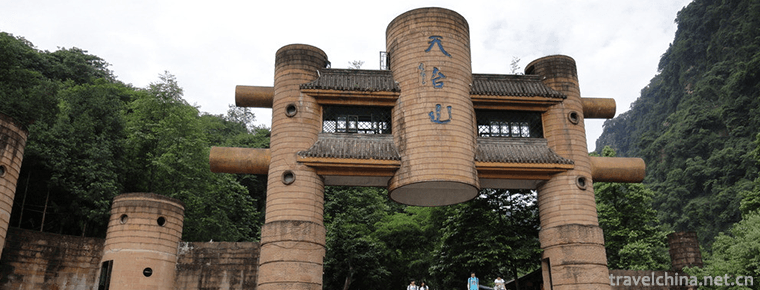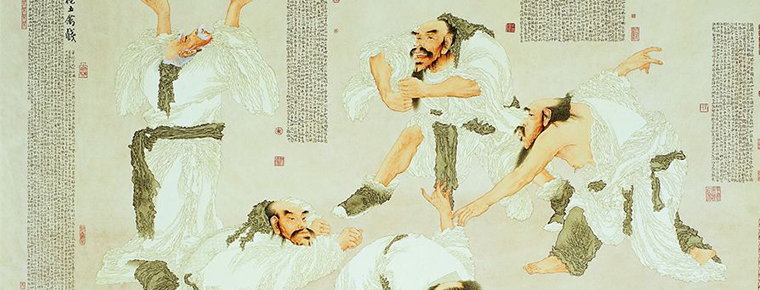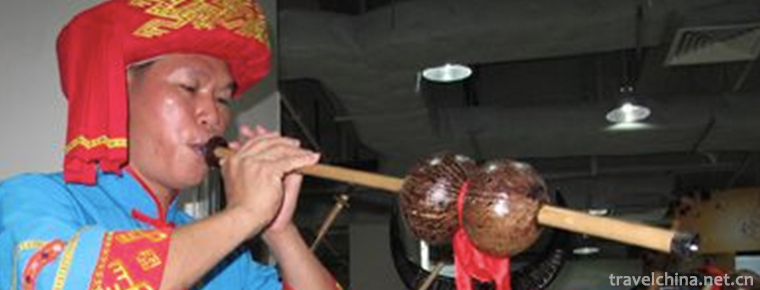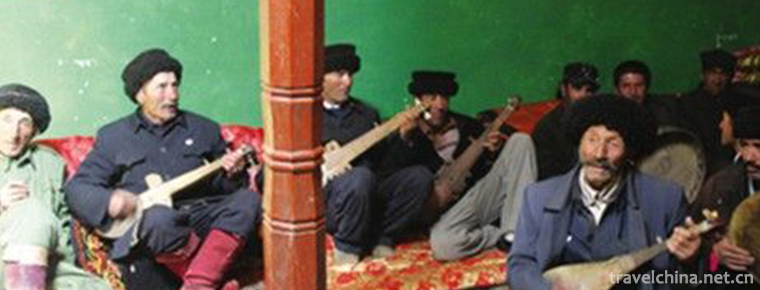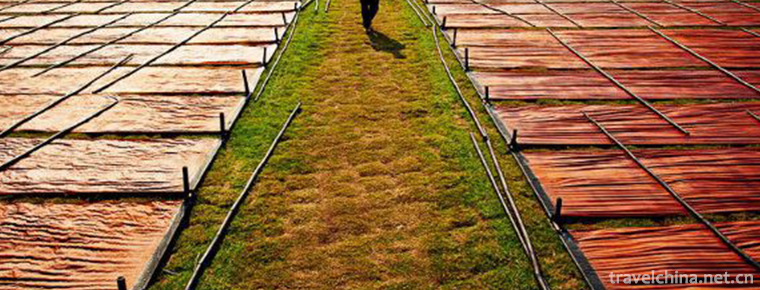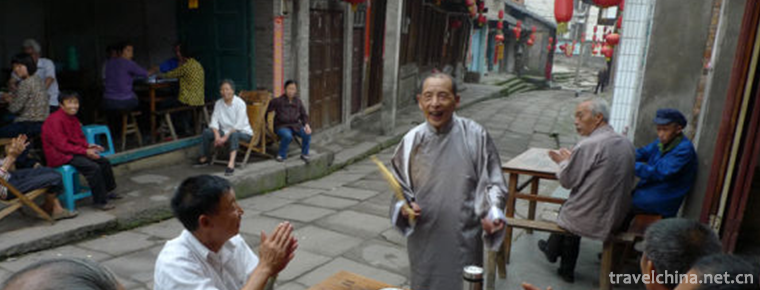Ming Xiaoling Mausoleum
Ming Xiaoling Mausoleum
The Ming Xiaoling Tomb is situated at the south foot of Zijinshan Mountain in Xuanwu District, Nanjing, under Dulongfu Playing Pearl Peak. It is adjacent to Zhongshan Tomb in the East and Meihua Mountain in the south. It is the tomb of Zhu Yuanzhang, the ancestor of Ming Dynasty, and his queen. Because Queen Ma's name is "Empress of filial piety" and because she pursues filial piety to govern the world, it is called "Xiaoling". It covers an area of more than 1.7 million square meters and is one of the largest Imperial Mausoleums in China.
The Xiaoling Tomb of Ming Dynasty was built in Hongwu 14 years (1381) and Yongle 3 years (1405) of Ming Dynasty. It took 25 years to transfer 100,000 military workers. Chengdu Tang and Song Dynasty Mausoleum "according to the mountains for the mausoleum" old system, and the founder of the new system for the mound. Harmony and unity of humanity and nature, to achieve the perfect height of harmony between man and nature, has become an excellent example of the combination of traditional Chinese architectural art culture and environmental aesthetics.
As the head of the Ming Emperor's Mausoleum in China, the Ming Xiaoling Mausoleum represents the highest achievement of architecture and stone carving art in the early Ming Dynasty. It directly affects the shape of more than 20 Imperial Mausoleums in the past 500 years of the Ming and Qing Dynasties. The mausoleums of the Ming and Qing Dynasties, which are distributed in Beijing, Hubei, Liaoning and Hebei, are built according to the regulations and patterns of the Ming Xiaoling Mausoleum in Nanjing, have a special position in the history of the development of Therefore, it has the reputation of "the first imperial mausoleum of the Ming and Qing Dynasties".
In March 1961, the Ming Xiaoling Tomb was listed as the first batch of national key cultural relics protection units; in July 2003, according to the selection criteria of the World Cultural Heritage, the Ming Xiaoling Tomb and its tomb of Ming Gongchen were listed as the world cultural heritage; in December 2006, it was also listed as the first batch of national key scenic spots and the first batch of national AAAAA-level tourist attractions.
Ming Dynasty
The Xiaoling Tomb of the Ming Dynasty was first built in 1381 in Hongwu, Ming Dynasty. The next year Queen Mah died and was buried in September. It was named Xiaoling Tomb. The name of Xiaoling is based on the word "filial piety" in the motto, which means "governing the world with filial piety". The first name is "filial piety" in the motto of Empress Madrid.
In the 31st year of Hongwu Ming Dynasty (1398), Zhu Yuanzhang, the emperor of the Ming Dynasty, collapsed in Yingtian Prefecture and was buried in the Palace of Land with Queen Ma. In the eleventh year of Yongle in the Ming Dynasty (1413), the "Divine Gong and Sacred Virtue Monument of Xiaoling Mausoleum in the Great Ming Dynasty" was built, and the whole Xiaoling Mausoleum lasted for more than 30 years. Its scale is huge and its architecture is magnificent. Its shape and structure are improved by referring to the mausoleums of emperors in Tang and Song Dynasties. When the fence was built, the palace was magnificent and the pavilions were magnificent. Half of the 70 monasteries in the Southern Dynasty were enclosed in the forbidden garden.
At that time, the imperial wall from Chaoyang Gate (now Zhongshan Gate) to Xiaolingwei to the northwest of the mausoleum was 45 miles long, and there were more than 5,000 garrisons stationed in the mausoleum. At that time, the cemetery cabinets and pavilions joined each other and smoke filled the palace. Songtao Lin Hai raised thousands of deer. During the deer's song, the momentum was extraordinary.
In the sixteenth year of Hongwu Ming Dynasty (1383), the main works such as Xiaoling Xiangdian Hall were basically completed, and 100,000 military workers were transferred successively. It took 25 years to complete in the third year of Yongle (1405). Its overall layout is divided into two parts: one is to guide the construction of the Shinto, the other is the main building of the mausoleum.
In the 31st year of Hongwu Ming Dynasty (1398), Zhu Yuanzhang, the ancestor of Ming Dynasty, died and buried Xiaoling. The palace where Zhu Yuanzhang and his queen were buried together, commonly known as "Baocheng", is a large circular mound about 400 meters in diameter, surrounded by a stone wall.
In June of the fourth year of Jianwen in Ming Dynasty (1402), King Yan and Zhu Di captured Nanjing and a fire broke out in the palace. Emperor Jianwen did not know where to end. After two symbolic explanations, Zhu Di "paid tribute to the Xiaoling Tomb" on his own day, although "he was full of praise, admiration and sadness".
In the Ming Dynasty, the Ming Xiaoling Mausoleum in Nanjing was always the foundation of the ancestors and was highly respected. There are three fixed sacrifices and five small sacrifices every year. All major events in the event of encounter with the state require ministers and ministers to be sent to give sacrifices.
After the Qing Dynasty
In the early Qing Dynasty, under the conflict between Manchu and Han Dynasty, the rulers of the Qing Dynasty were in need of policies. They also had to enlarge the majority of Han people to strengthen their rule. Affected by the Han culture, they carried out protection policies for the Ming Tombs.
In May of the first year of Shunzhi in the Qing Dynasty (1644), when the national situation was unstable, Prince Dorfan of Regent Rui "sent a scholar Feng Quan to worship the ancestors and emperors of the Ming Dynasty".
In the early May of the second year of Shunzhi Qing Dynasty (1645), Duo, the prince of Henan, settled down in the south of the Yangtze River. He arrived in Nanjing in the middle of this month. On the 27th, he visited the Ming Mausoleum and repaired the monks in Minglinggu Temple. In July, he also sent two officers and Deputy officers to guard the Ming Mausoleum with forty mausoleums.
In 1684, Emperor Kangxi visited Jinling for the first time in the twenty-third year of Emperor Kangxi's reign. "Go up by Yongdao, and all the officials are dismounted outside the door. Three kneels and nine kowtows on the ascent, three sacrifices in front of the city of Jibao, and three sacrifices in front of the city of Jibao. There are some differences in rewarding and guarding mausoleum prisoners and mausoleum households. The imperial decree forbids the exploitation and orders the governor and local officials to make strict inspections. The respectful attitude and the respectful number of rituals in his visiting mausoleum were beyond the expectation of most people. "Fathers and elders follow tens of thousands of people, all feel weeping."
In the thirty-eighth year of Emperor Kangxi of the Qing Dynasty (1699), Xuanye went down to the south of the Yangtze River to pay homage to the Xiaoling Mausoleum, which was inscribed on the stele Pavilion of "Governing Long, Tang and Song Dynasties".
The Ming and Qing Dynasties still enjoyed a lofty status. In particular, during the reign of Kangxi and Qianlong, Kangxi toured the South six times, sent officials to worship, visited the tombs five times in person, and Qianlong toured the South six times, and then came to the Ming Xiaoling to "drink with fragrance". And when they worship, they all go on three knees and nine kowtows, which can be said to be excellent and elegant. It was praised by people at that time as "the elegant rituals, more than the common sacrifices, which is a deed of prosperity for thousands of years".
During the reign of Xianfeng in Qing Dynasty, the war of Taiping Heavenly Kingdom almost destroyed the surface architecture of Xiaoling Mausoleum in Ming Dynasty, and the imperial tablet of Kangxi handwriting fell to the ground.
In September, 1864, Tseng Guofan, then governor of the two rivers, offered an imperial edict to the mausoleum to restore the mausoleum of Xiaoxiao in the Ming Dynasty. At that time, Zeng Guofan sent his staff to estimate that the maintenance of Xiaoling Mausoleum in the Ming Dynasty actually required 200,000 silver, but the Qing Dynasty was financially constrained. As a result, only 740 pairs of silver were used for some minor repairs. The imperial stele of Zhilong Tang and Song Dynasties was raised and bonded. Originally, we can go around the stone tablet on both sides, but after the 1980s, the whole stone tablet was fixed by cement until the roof; so we need to come out of the imperial monument hall before we can see the back of the tortoise.
In the first year of Xuantong Qing Dynasty (1909), Daotai of the General Administration of Foreign Affairs of Liangjiang and Zhifu of Jiangning Prefecture erected special notice tablets in front of the Wenwu Fangmen to warn tourists from all over the world not to scribble here.
On February 15, 1912, in the first year of the Republic of China, Sun Yat-sen took officials of the Nanjing Provisional Government to pay tribute to the Ming Xiaoling Mausoleum and prepared a memorial ceremony.
In 1961, the Ming Xiaoling Tomb was announced as the first batch of national key cultural relics protection units.
Since 1997, cultural relics workers have been exploring and studying Xiaoling for six years by means of high-tech means such as precise magnetic survey. It has been proved that no excavation has been successful in history. The reason why it is well preserved so far is determined by the special anti-theft measures, historical opportunities and geographical location of the Ming Xiaoling Tomb.
In July 2003, at the 27th World Heritage Congress, the Ming Xiaoling Tomb was listed in the World Heritage List as an extension project of the "Royal Mausoleum of Ming and Qing Dynasties". The tombs of Ming Gongcheng around it, often encountering the tombs of Spring, Qiu Cheng, Wu Liang, Wu Zheng and Li Wenzhong, were also included in the protection scope of the world heritage.
World Heritage Committee evaluation: The imperial mausoleum of Ming and Qing Dynasty, according to geomantic omen theory, carefully selected its site and skillfully placed a large number of buildings underground. It is the product of human nature change, embodies the traditional architectural and decorative ideas, and explains the world outlook and power outlook of feudal China which lasted for more than 500 years. The Imperial Mausoleums of the Ming and Qing Dynasties are located in Beijing, Hubei, Liaoning, Anhui and Jiangsu. They are the mausoleums of the emperors of the Ming and Qing Dynasties in China. They are built according to strict hierarchical regulations. They have a complete system of above-ground and underground buildings with precise layout, grand scale, magnificent architecture and fine craftsmanship. They embody the highest burial system in Chinese feudal society.
After more than 600 years of wind and rain, Baocheng wall appeared partial collapse, wall peeling, and some places formed huge cracks because of the reverse tearing of foundation settlement. Nanjing Municipal Department of Cultural Relics has invested more than 3 million yuan successively, adopting the protection scheme of experts in ancient architecture of Southeast University. According to the requirement of repairing old buildings as old ones, the wall has been repaired, such as "stitching" cracks, leveling "wall surface", repairing deformed walls and "operation" of waterproof and leakage prevention. In order to facilitate visitors to see the true appearance of the "dragon vein", a blue slate tourist trail has been built so that visitors can climb the top of Baoding to see the whole picture of the Ming Xiaoling Mausoleum.
In June 2008, the Ming Xiaoling Fangcheng Ming Building Protection Project started.
In February 2009, the Ming Xiaoling Museum officially opened to the public free of charge. It is a special exhibition hall about the Ming Taizu Zhu Yuanzhang, the world cultural heritage Ming Xiaoling and the Ming culture of Nanjing. The appearance of the new museum adopts the architectural style of Jiangnan area during the Ming and Qing Dynasties. The application of typical elements such as white wall, grey tile, carved wooden door, sloping roof, horsehead wall and lattice window makes the whole building and the surrounding Ming Xiaoling. The cultural relics such as Dajinmen and Sifangcheng are in harmony with the lush natural environment, which also coincides with the construction concept of "harmony between man and nature" of Xiaoling Mausoleum in Ming Dynasty more than 600 years ago.
In May 2012, the Sifang City, the sacred stele Pavilion of Xiaoling Mausoleum in Daming, started the renovation and roofing project.
In July 2013, the top-up protection project of Sifang City was completed.
On June 8, 2018, the Ming Xiaoling Tomb was selected as the "Top Ten Most Popular World Heritage Sites in China".
Tourism information
traffic
transit
Route 3, 20 and 202
metro
Xiamafang Station of Nanjing Metro Line 2
Admission ticket
Parent-Child Ticket of Ming Xiaoling (Big and Small)Summer vacation (7.3-7.28)
Market price 105 yuan, network price 86 yuan
Adult Ticket of Xiaoling Ming Dynasty
Door market price 70 yuan, network price 60 yuan
Half-price tickets for students and children in Xiaoling, Ming Dynasty Summer vacation (7.3-7.28)
Door market price 35 yuan, network price 35 yuan
Zhongshan Scenic Spot Package (including: Ming Xiaoling + Linggu Temple + Music Station) has a market price of 115 yuan and a network price of 85 yuan.
1. Opening time: 06:30-18:00 (ticket collection time: 7:00-16:00)
2. Place of ticket collection
(1) Tickets for Ming Xiaoling Mausoleum: Tickets are collected at the scenic spot ticket office (No. 1 Meihua Valley, No. 3 Meihua Valley and Zixia Lake Ticket Office) by means of on-line payment of short messages.
(2) Set tickets for Zhongshan Scenic Spot: Tickets are collected at the ticket office of the scenic spot (No. 1 of Meihua Valley in Ming Xiaoling, No. 3 of Meihua Valley in Ming Xiaoling, Linggu Temple, Music Station and Zixia Lake).










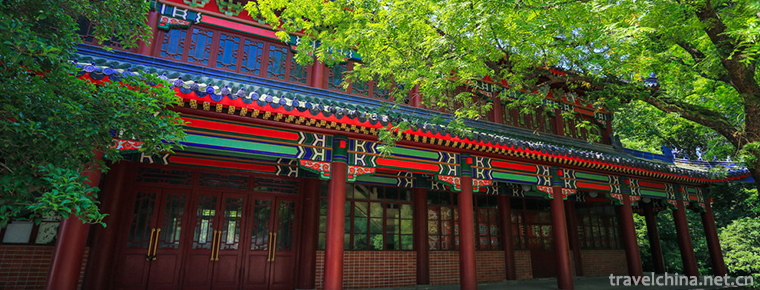
-
Tiantai Mountain Scenic Area
Tiantai Mountain Scenic Spot, National AAAAA Class Tourist Spot, National Key Scenic Spot, One of China's Top Ten Famous Mountains, National Eco-tourism Demonstration Zone, Zhejiang Top Ten Tourist Sp.
Views: 259 Time 2018-12-07 -
Red Leaf Valley Eco cultural Tourist Area
Red Leaf Valley Eco-cultural Tourist Area, National Key Scenic Spot, National AAAA Class Tourist Spot. Red Leaf Valley is located in the southern mountain area of Jinxiuchuan Township.
Views: 193 Time 2019-01-16 -
Manufacturing Techniques of Spotted Copper
The bronze production technology, the traditional handicraft of Qujing City, Yunnan Province, is one of the national intangible cultural heritage..
Views: 145 Time 2019-04-03 -
Huatuo Wuqin Opera
Huatuo Wuqin Opera is a set of guiding techniques compiled by Huatuo, a famous physician in the late Eastern Han Dynasty, according to the principles of traditional Chinese medicine,.
Views: 94 Time 2019-05-04 -
Bamboo and Wood Instrument Music of Li Nationality
The traditional instrumental music of Li Nationality is based on abundant bamboo and wood resources, including solo music, ensemble music, song and dance music, sacrificial music and eight kinds of mu.
Views: 137 Time 2019-05-13 -
Linxia brick carving
Linxia brick carving (also known as Hezhou brick carving) is a practical art closely combined with buildings. Linxia brick carving matured in the Ming and Qing dynasties, and in modern times it absorb.
Views: 114 Time 2019-05-13 -
Salar Costume
The traditional dresses of the Salar nationality are bright and bright in color and full of national characteristics. Salar costumes have two characteristics, namely (1) Islamic color of costumes; (2).
Views: 127 Time 2019-06-11 -
Tajik Folk Songs
Tajik folk songs are very rich in content. The folk songs handed down to this day include folk songs reflecting ancient social life, customs and customs, eulogizing love and religious rituals. The mai.
Views: 166 Time 2019-06-17 -
Dyeing and Finishing Techniques of Xiangyun Yarn
Xiangyun yarn dyeing and finishing technology, the traditional handicraft of Shunde District, Foshan City, Guangdong Province, is one of the national intangible cultural heritage..
Views: 99 Time 2019-07-03 -
Folk Stories of Zouma Town
Folk stories of Zouma Town, Jiulongpo District, Chongqing City, are spread in Zouma Town. The exact age of its origin can not be verified. However, the Zouma Town was established in the late Ming and .
Views: 494 Time 2019-08-16 -
juvenile Meng Ran Tik Tok Songs 2020 Hot Songs
"Juvenile" is a song composed and sung by mengran, which is included in the album "juvenile" released by mengran on November 14, 2019..
Views: 182 Time 2020-05-21 -
Guangan transportation
Located at the junction of Sichuan and Chongqing, Guang'an is an important passage from east Sichuan to Chongqing and southward and eastward. It is also an important node on the national "five vertical and seven horizontal" traffic trunk line.
Views: 339 Time 2020-12-19
